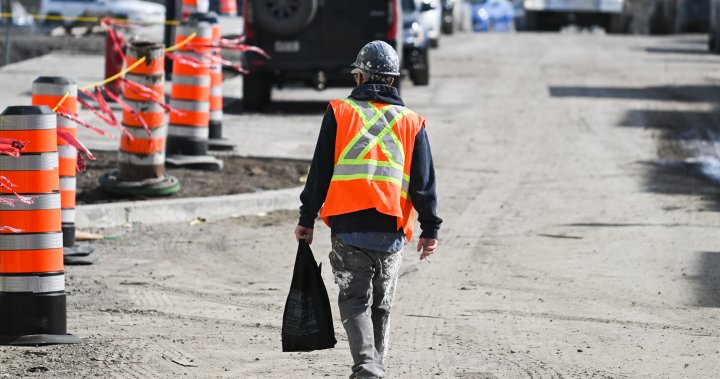Inflation’s “volatility’” is keeping the Bank of Canada cautious about the future path for interest rate decisions, according to a senior central bank official.
Deputy governor Toni Gravelle spoke to reporters after a speech in Windsor, Ont. on Thursday, a day after the Bank of Canada held its benchmark interest rate at five per cent for the third consecutive decision.
Despite the hold and expectations from some market watchers that rate cuts could be coming in the spring, the central bank has continued to warn that future hikes are still in the cards.
Gravelle said that despite progress in taming inflation, the Bank of Canada is not convinced that it has tightened monetary policy enough to tame inflation.
“It’s pretty clear that we’re not on a sustainable path to two per cent (inflation) yet,” he told reporters Thursday.
Inflation has cooled significantly this year as Canada’s economy weakens. The annual inflation rate in October was 3.1 per cent, down from 3.8 per cent the month earlier, thanks largely to lower gas prices.
But “one month doesn’t make a trend,” Gravelle said, noting that inflation dropped to 2.8 per cent in June of this year before rebounding to four per cent later that summer.
The Bank of Canada needs to see more progress in its underlying inflation metrics before it can be convinced that inflation will fall all the way back to its two per cent target without further tightening, he said. Elevated wage growth, short-term inflation expectations and consumer pricing behaviours are three areas the central bank has said it’s watching to ensure price stability returns.
“We haven’t seen enough data to be less concerned about the inflation outlook,” Gravelle said.
“There’s still some volatility out there, that’s why we’re holding onto our view that there are still some risks to the inflation outlook.”
In his speech to the Windsor-Essex Regional Chamber of Commerce earlier in the day, Gravelle said the recent surge in newcomers is adding to inflation through housing demand, warning rents and home prices could continue to rise without boosting housing supply.
Gravelle acknowledged many of the benefits coming from this rise in immigration, noting it has helped grow the economy, expand the workforce and counteract our aging demographics.
But he warned it’s also adding pressure to a housing market riddled with structural challenges, including zoning restrictions and a shortage of construction workers.
“This jump in demographic demand coupled with the existing structural supply issues could explain why rent inflation continues to climb in Canada. It also helps explain, in part, why housing prices have not fallen as much as we had expected,” Gravelle told the Windsor-Essex Regional Chamber of Commerce.
The Bank of Canada has recently noted that even as interest rates have risen, other shelter costs that would typically fall — like house prices — have not declined by much.
It’s attributed this phenomenon to the fact that Canada’s housing supply has struggled to keep pace with demand.
The deputy governor said shortly after immigration began ramping up in 2015, Canada’s vacancy rate — which measures how many homes are available to rent or buy — started to fall.
“Then, when newcomer arrivals picked up sharply in early 2022, that steady decline in the vacancy rate became a cliff,” Gravelle said.
The combination of higher population growth and these structural problems have contributed to the discrepancy between housing markets in the U.S. and Canada, the deputy governor said.
“Canada’s housing supply has not kept pace with recent increases in immigration. This is different from the United States, where housing construction has been more flexible to respond to population shifts and where rent inflation is expected to continue to decline,” he said.
The deputy governor warned all levels of government to need to work together to reduce barriers to building more homes, or else rent and home prices could continue to climb.
Canada has experienced strong population growth in the last couple of years as the federal government pursues more ambitious immigration targets and allows more non-permanent residents into the country.
— with files from The Canadian Press
© 2023 Global News, a division of Corus Entertainment Inc.




